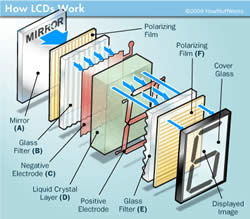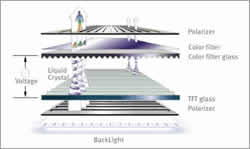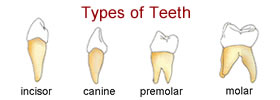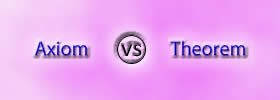Difference Between TFT and LCD
Key Difference: LCDs are a type of television screen that uses liquid crystals sandwiched between two sheets of polarizing material. TFT (Thin-film transistor) is a field-effect transistor that is used to build the LCD screen and is embedded in every pixel, making it faster and giving a better image quality.

An LCD is type of television screen that uses liquid crystals sandwiched between two sheets of polarizing material. LCDs are used in TVs, computer monitors, clocks, calculators, cell phones, etc. LCDs provide significant benefits compared to CRTs and plasmas, such as they consume less power than both. Both CRTs and Plasmas are susceptible to burn-ins while LCDs are not. However, LCDs require a backlight as it does not emit light by itself.
 TFT (Thin-film transistor) is a field-effect transistor that is used to build the LCD screen. A TFT is created by depositing thin films of a semiconductor active layer as well as the dielectric layer and metallic contacts over a supporting substrate. Each pixel of a LCD receives a transistor that makes switching it on and off very easy. Also since the TFT are embedded within the panel itself, it reduces the crosstalk between pixels. Crosstalk is when a signal transmitted to one pixel also affects another pixel. A TFT is also known as an active matrix display technology, which is more responsive to change and has a faster refresh rate. The faster response rate also eliminated the problem faced by gamers. Currently, TFTs have become the standard in producing LCD and LED screens.
TFT (Thin-film transistor) is a field-effect transistor that is used to build the LCD screen. A TFT is created by depositing thin films of a semiconductor active layer as well as the dielectric layer and metallic contacts over a supporting substrate. Each pixel of a LCD receives a transistor that makes switching it on and off very easy. Also since the TFT are embedded within the panel itself, it reduces the crosstalk between pixels. Crosstalk is when a signal transmitted to one pixel also affects another pixel. A TFT is also known as an active matrix display technology, which is more responsive to change and has a faster refresh rate. The faster response rate also eliminated the problem faced by gamers. Currently, TFTs have become the standard in producing LCD and LED screens.
Image Courtesy: howstuffworks.com, ercservice.com









Comments
Very good information
jagat
Mon, 12/15/2014 - 10:20
Add new comment